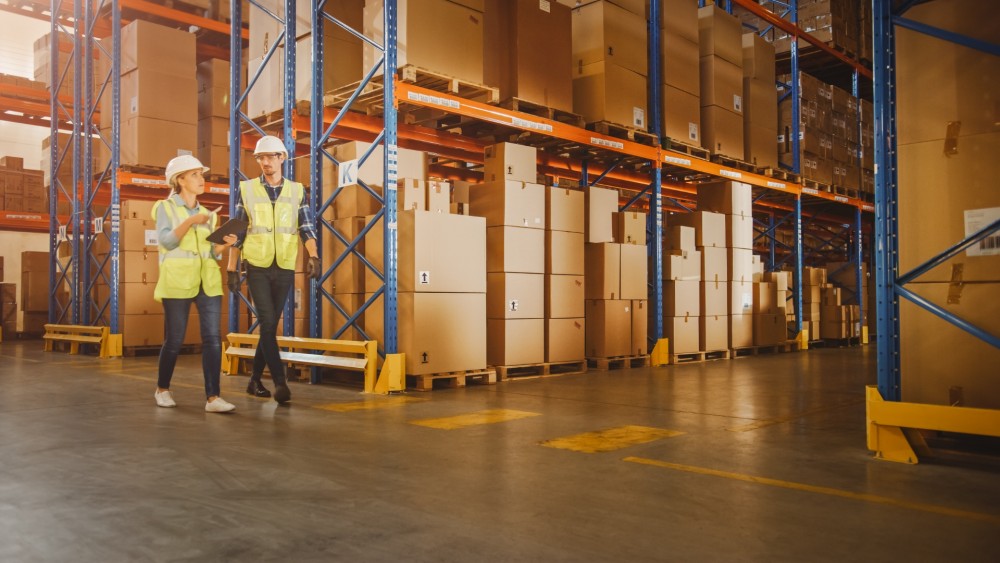Thursday November 21, 2024
- ALL NEWS
- SMALL & MEDIUM ENTERPRISES (SME)
- INTERNATIONAL TRADE
-
REGIONS
-
NON-REGIONAL
Search

The underlying technologies of the Internet of Things (IoT) are beginning to mature, and as it does, it is driving innovation in sensor technologies, which is further fueling the IoT. Hand in hand, the IoT and sensor technology are shaping the future of all sectors that are influenced by this technology.
Modern warehouses, for example, are increasingly adopting IoT and sensor technology to streamline workflows, improve safety, reduce overheads, and increase speed and efficiency. Currently, there are numerous different types of sensors on the market that are already shifting the way modern warehouses work. We discuss this technology below.
Tracking and tracing of equipment and inventory
One of the most important functions of a warehouse is to store and mobilize stock. In many cases, products are brought into a warehouse following production (on site or off site), stored, and then collected when they are ready to be shipped. Much time can be wasted locating and moving items. Sensor technology, however, is optimizing this process.
Many platforms have been established that use a variety of sensors (e.g. weight sensors, GPS, RFID) to provide real-time information on item location, giving greater visibility of inventory in stock, as well as while it is on the move in or out of the warehouse.

Sensors reduce overheads by optimizing lighting conditions
There is a great opportunity for warehouses to reduce their overheads by cutting wasted energy usage. One of the biggest sources of wasted energy is unnecessary lighting. Sensors allow warehouses to reduce energy use by triggering lights to turn on when they sense movement, and off when they no longer sense movement. Further to this, integration with other connected devices can allow for more precise management of lighting, for example, in some cases it may not be necessary for the entire room to be lit. Additionally, if windows are letting through natural light, this decreases the demand for artificial light, this information can be collected and fed into sophisticated systems that make fine adjustments to lighting needs.
Robots will become commonplace in warehouses
While robots will unlikely replace human jobs outright, they will likely become commonplace in warehouses and other industries working alongside human workers. In warehouses, robots are already being used to help automatically transport goods. These robots, known as collaborative robots, help humans perform repetitive, complex, or hazardous tasks (e.g. retrieving inventory from high places). Collaborative robots rely on sensor technology to guide and fine-tune their movements.
In addition to collaborative robots, automated guided vehicles (AGVs) will also likely become commonplace in warehouses. These robots rely on sensors to safely and efficiently navigate the space. They are being widely adopted to increase the efficiency of how inventory is moved around the warehouse.
Why should SMEs adopt sensor technology in warehouses?
There are many potential benefits of adopting sensor technology in warehouses that SMEs have the opportunity to take advantage of. It has been suggested that sensor technology may increase operational efficiency through automation, limit the cost of repairs by improving maintenance processes, enhance inventory management via real-time tracking, and reduce the costs of overheads.
Stay Tuned with Exports News
Make sure to subscribe to Exports News today and receive all the latest import/export information and news!
No Comments
Add comment



We’re happy you are satisfied with Exports News. Please let us know if you need enything!
support@exportsnews.comWe’re sorry your experience was not satisfactory. Please let us know how we can improve your experience:
Please contact us with any questions or concerns: support@exportsnews.com


Your feedback has been received! If you have any other questions or concerns, please contact us at:


There aren't any comments yet. Be the first to comment!